Environments Studio IV: The Invisible is about exploring design, behavior, and people’s understanding, in physical, digital, and hybrid environments. The course comprises practical projects and workshops focused on investigating, understanding, and materializing invisible and intangible phenomena and relationships, such as social interaction, infrastructures, and systems, through new forms of probe, display, and interface. We are re-interpreting the formal course subtitle, ‘Designing Environments for Social Systems’, as being about engaging with ‘The Invisible’ in its many forms.
- Tuesdays and Thursdays, Margaret Morrison Carnegie Hall 210, 1.30–4.20pm, January 17th to May 4th, 2017
- Instructor: Dr Dan Lockton (danlockton@cmu.edu)
- Teaching Assistant: Nehal Vora (nehalv@andrew.cmu.edu)
- Thank you to our guests and visitors over the semester: Dr Min Kyung Lee, Francis Carter, Ahmed Ansari, Dixon Lo (CMU); Dr Stuart Candy (OCAD); Chang Hee Lee (RCA); Simone Rebaudengo (Automato.farm); Amir Mirza (University of Karachi)
This syllabus will be updated over the course of the semester. But the basic plan is that we will cover three units, each of which will result in a project, plus a couple of special ‘interlude’ projects:
| Weeks 1–3: Jan 17–Feb 2 | Unit 1: Design, behavior and social interaction | How the design of environments, and features within them, affects people’s behavior and interaction. Project: Probing how design influences behavior in a particular situation. |
|---|---|---|
| Weeks 4–10: Feb 7–Mar 21 | Unit 2: Materializing the Invisible | Considering invisible and intangible phenomena that exist in environments—the systems, constructs, relationships, backends and other entities, physical and conceptual. Project: Materializing such a phenomenon through creating a visual, audible, tangible or other sensory, probably qualitative, display. |
| Weeks 10–11: Mar 23 and Mar 30 | Interlude: Urban Affordances Walkshop with Francis Carter | Exploring new kinds of affordance in Pittsburgh’s urban environment, in theory and practice. |
| Weeks 10–12: Mar 28–Apr 6 | Interlude: Environments Exchange |
Virtual ‘exchange’ with students in Karachi, Pakistan, to explore different conceptions and framings of environments and design. |
| Weeks 13–16: Apr 11–May 4 | Unit 3: Thinking about things that think about how we think | Exploring issues arising around design’s interaction with AI in its various emerging forms—particularly in relation to the models of “what humans are like” in the design of algorithmic systems. Project: An interface experience enabling exploration of issues involved, through interacting with ‘intelligence’, simulated or real. |
Note that there will be no class on March 14th, March 16th or April 20th, due to Spring Break and Spring Carnival.
Unit 1: Design, behavior and social interaction (Weeks 1–3: January 17th to February 2nd)
In this short introductory unit, we will look at the ways in which the design of environments, and features within them, affects people’s behavior and interaction with each other. Design influences what people do, but often the ‘links’ are invisible or only apparent by their effects. Or, we notice them in passing, but do not take time to reflect on them or draw parallels across situations. As designers pioneering new approaches to creating environments for human experience, cultivating a kind of ‘hypersensitivity’ to noticing—and learning from—the ways in which design and behavior interact can be part of developing the attention to detail which will serve you well professionally. Parts of this unit draw on Engaged Urban Research Methods, a course that Flora Bowden and I developed and have taught for two years with Don Ostdiek for Rice University’s summer program in Copenhagen.
- An unintended use: a fire extinguisher used to prop open an office door (Brunel University, London)
- ‘Disobedience’, Trinity College Dublin: ‘Please keep off the lawns’
- A constraint, Islington, London: physical separation of cycle lane from the main carriageway of a road
- A potential point of confusion for users unfamiliar with the situation: a women-and-children only platform area on the Mexico City metro
We start with quick observation exercises aimed at developing (or refreshing) a capacity for noticing, for paying attention to the ways in which people and environments affect each other. First, we will look around campus for instances of points of confusion, unintended uses, constraints, and disobedience in physical environment settings, and discuss how these effects manifest in different ways—what can you find?
We will watch part of William H. Whyte’s classic documentary The Social Life of Small Urban Spaces (1979) to explore some of the approaches to thinking about, and studying practically, how the design of environments influences people’s actions, and read a bit about thigmotaxis in architecture and how psychological phenomena such as this can be investigated. We will do some observation in more detail around campus, eliciting and characterizing the patterns that emerge from different people’s interaction with environments over time, using principles from John Zeisel’s Inquiry by Design, adapting them for digital contexts where appropriate. This could be, for example, looking at how people navigate a space or how people use a piece of technology within a physical environment, and the diversity of interactions that happen.
The Social Life of Small Urban Spaces by William H. Whyte (on the Internet Archive)
Your project brief for Unit 1 is around designing a way to do research in this field—designing a ‘probe’ rather than a solution to a problem:
Project 1
- Choose a situation where ‘design’ seems to be affecting people’s behavior in an environment (physical or digital)
- Find a way of studying what’s going on—what patterns exist? In what different ways are people’s behavior affected?
- Visualize (or otherwise communicate) what you find
- (optional: suggest ways things could be different, if you feel they need to be)
- Keep a blog of your process (photos, sketches, notes)
- Be ready to present your project on Thursday February 2nd
- This is an individual project: you can collaborate where you need to, but make sure you each do your own investigation
It might be ‘mass’ behaviors quantified (e.g. people’s paths around an obstacle) or something more qualitative (e.g. people’s sentiments in a particular environment). You might want to study what’s happening using your own observation in-person, record it over time, or develop a way for (traces of) the phenomenon to be somehow tracked or logged directly. Maybe the behavior is revealed through annotations that others have made—signs or notes explaining what to do. How do ‘real-world’ methods translate to a digital context, and vice versa?
- Pedestrian flow through a German rail station, drawn from video (from research by Maria Davidich and Gerta Köster
- Footprints in the snow provide a revealed trace of people’s paths
- The way this map at a zoo has been worn by people’s fingers around the “You Are Here” marker suggests they may have been tracing paths to take and areas to see.
- Candy Chang’s I Wish This Was project involved placing “stickers on vacant buildings across New Orleans to invite residents to easily share their hopes for these spaces”
- Arrows given to office workers as part of the CarbonCulture at DECC project so they could annotate their space with comments and questions about energy use.
- Commonplace provides commentable maps so members of the public can add their ideas or reactions in situ. Here the comments are about a driverless car trial in London.
Alongside the project, we’ll be looking at other aspects of design and behavior in environments. We’ll delve a bit into explicit design for behavior change techniques, particular those involving the design of features in indoor and outdoor built environments, those which have parallels across physical and digital contexts, and those where bringing contextual information into places it wouldn’t otherwise be, can change the experience people have and the decisions they make. We will also explore some ideas from my own forthcoming Design with Intent book. Some concepts here include the ideas of enabling, motivating or constraining behavior, Herbert Simon’s ‘scissors’ metaphor for the interplay of context and cognition, the idea of stigmergy being considered within design, and questions around the extent to which people’s behavior can ever be ‘planned’.
- Enabling: Wheelchair-accessible beach area, Nice, France
- Redesigning the kitchen: design by Ernő Goldfinger, 1944
- Constraining behavior: broken glass cemented into a wall
- Pseudo-seating objects at a Westfield mall in Shepherd’s Bush, London
- Entrance for “Special Girls” at former school, Zaha Hadid Architects’ headquarters, London
- Putting contextual information into the environment: footprints to follow on a busy airport concourse
- Putting contextual information into the environment: Pittsburgh warns against dumping into drains
- Putting contextual information into the environment: morePlatz’s Baugespann “visualizes future urban developments in scale 1:1 by an inflated balloon-structure”
We will watch/read parts of Stewart Brand’s How Buildings Learn, particularly to think about the longer time dimension of people’s interaction with environments, Frank Duffy’s concept of shearing layers, Brand’s later concept of pace layers, and subsequent adaptations of the idea in relation to hybrid physical/digital environments. We will also think a bit about the practice of observation, noticing and deconstruction of people’s actions in different ways, such as exhaustive detail (Georges Perec, Nicholson Baker) and considering rhythms (Henri Lefebvre), and the diversity of ways in which a place such as a city can be experienced and interpreted by different people (Jane Jacobs, Geoff Manaugh). We will briefly consider how intentions are often read into observed behavior, watching Fritz Heider and Marianne Simmel’s classic video from “An Experimental Study of Apparent Behavior” and discussing the fundamental attribution error.
Unit 1 Readings
Extracts from:
- Ann Sussman and Justin B Hollander, 2015, Cognitive Architecture
- Jane Jacobs, 1961, The Death and Life of Great American Cities
- John Zeisel, 1984, Inquiry by Design: Tools for Environment-Behavior Research
- Henri Lefebvre, 2004 (1992), Rhythmanalysis
- Nicholson Baker, 1988, The Mezzanine
- Georges Perec, 2010 (1975), An Attempt At Exhausting A Place in Paris
- Geoff Manaugh, 2016, A Burglar’s Guide to the City
- Stewart Brand, 1994, How Buildings Learn: What Happens After They’re Built
- Stewart Brand, 1999, The Clock of the Long Now: Time and Responsibility
- William H. Whyte, 1980, The Social Life of Small Urban Spaces
- Fritz Heider and Marianne Simmel, 1944, ‘An Experimental Study of Apparent Behavior’
- Deborah Du Nann Winter and Susan M Koger, 2004. The Psychology of Environmental Problems, 2nd edition
- Dan Lockton, 2012, ‘Simon’s Scissors and Ecological Psychology in Design for Behaviour Change’ (link)
- Dan Lockton, 2011, ‘Architecture, urbanism, design and behaviour: a brief review’ (link)
Files will be on Google Drive.
Unit 2: Materializing the Invisible (Weeks 4–10: February 7th to March 21st)
This unit forms the largest part of the course. In Materializing the Invisible, we will be explicitly considering invisible and intangible phenomena—the systems, constructs, relationships, backends and other entities, physical and conceptual, which comprise or influence much of our experience of, and interaction with, environments both physical and digital. ‘The invisible’ here is potentially everything from how the building’s heating system works, to who’s friends with whom, to where corruption is occurring in government, to where your IoT fridge sends the data it collects, to people’s mental imagery of time, to the electricity use of devices, to how political decisions are made. It also potentially includes things that happen at scales or in dimensions we can’t directly comprehend, from planetary processes such as climate, to the interaction of electromagnetic fields, to the microscopic. And things that happen, that enable day-to-day functioning of our lives, but we don’t know much about. Where does our food come from? Where does our waste water go? What route did that package take to get to us?
The process of revealing the invisible can improve understanding, help people explore their own thinking and relationships with these complex concepts, highlight problems, power structures and inequalities, reveal hidden truths and connect people better to the world around them. It is not necessarily about visualizing the invisible—it can be about making it audible, tangible, smellable, or otherwise experienceable: we will be using techniques from fields including data visualization, sonification, data physicalization, ubiquitous computing, tangible interaction, analog computing, and the study of synaesthesia to create ways to materialize these invisible phenomena. (Some previous student projects have covered aspects of these ideas: projects from Seeing Things, a course Flora Bowden and I ran at the RCA in 2013, and One Another, a course Dr Katie Gaudion and I ran in 2015.)
Much of how we construct meaning in the real world is qualitative rather than quantitative. We think and act in response to, and in dialogue with, qualities of phenomena, and relationships between them. Yet, quantification has become a default mode for information display, and for interfaces supporting decision-making, and this can add an extra layer of abstraction to understanding complex ideas. There are more opportunities for qualitative displays, and the approach may be particularly suited to ‘the invisible’—we will explore some of the ideas behind them.
Guests: Week 4: Dixon Lo; Week 5: Simone Rebaudengo
Project 2
Your project (individually or in a pair) will be about creatively materializing, and revealing, invisible phenomena in digital, physical or hybrid environments (including, potentially, using the environment as part of the materialization:
Project set: Thursday February 9th; project due March 21st (first Tuesday class after spring break)
- Choose a phenomenon which is ‘invisible’ within a physical, digital or hybrid environment. Broad categories might be ‘energy’, ‘data’, or ‘relationships between people’, but work out a more specific focus within the broader category you choose.
- Find a way of getting access to the invisible phenomenon or phenomena. You might have to do observation, talk to people, or get permission to get access to places or data that are otherwise hidden. It might involve using technology to sense something, or asking people to do something. Be creative here. (We can help with ‘official’ requests if you need them.)
- Design and build / make / create a way of ‘materializing’ the invisible phenomenon, making it visible, tangible, audible, smellable… somehow accessible to people more widely. Consider the idea of a qualitative display rather than an entirely quantitative one.
- This might be an installation in physical space (in your studio) but make it moveable so it can also be set up elsewhere later. Or, it might be digital. Think about what experience you are creating for an ‘audience’ — how will they understand what you have done?
- Use each other’s skills to create more ambitious projects than you might be able to do on your own
- Keep a blog of your process (photos, sketches, notes) including a reflection on how your thinking changes over the project
- Be ready to present your project on Tuesday March 21st
- This project is worth 35% of your grade for E Studio IV
You are pioneers here: your projects will be exploring and expanding the frontiers of environments design, creating new knowledge through the ways you engage with invisible phenomena. As such, we will also aim collaboratively to write a paper for submission to a conference or journal as a result of the projects (on which you would all be co-authors). So, keep good notes as you go along!
Unit 2 Readings
Choose among extracts from:
- Ingrid Burrington, 2015, Networks of New York: An Internet Infrastructure Field Guide
- Timo Arnall, 2014, Making Visible
- Mark Weiser and John Seely Brown, 1995, ‘Designing Calm Technology’
- Amber Case, 2016, Calm Technology
- James C Scott, 1999, Seeing Like A State
- Dieter Zinnbauer, 2012, ‘Ambient Accountability—Fighting Corruption When and Where it Happens’
- Claire Rowland, Elizabeth Goodman, Martin Charlier, Ann Light and Alfred Lui, 2015, Designing Connected Products
- Flora Bowden, Dan Lockton, Rama Gheerawo and Clare Brass, 2015, Drawing Energy
- James Pierce and Eric Paulos, 2010, ‘Materializing Energy’
- Timothy Morton, 2013, Hyperobjects: Philosophy and Ecology after the End of the World
- David Rose, 2014, Enchanted Objects
- Dan Lockton, Delanie Ricketts, Shruti Aditya Chowdhury and Chang Hee Lee, 2017, ‘Exploring Qualitative Displays and Interfaces’
- Stefania Serafin, Karmen Franinovic, Thomas Hermann, Guillaume Lemaitre, Michal Rinott and Davide Rocchesso, 2011, ‘Sonic Interaction Design’
- Dan Lockton, Flora Bowden and Claire Matthews, 2016, ‘Powerchord: Exploring Ambient Audio Feedback on Energy Use’
- Hiroshi Ishii and Brygg Ullmer, 1997. ‘Tangible bits: towards seamless interfaces between people, bits and atoms’
- Hiroshi Ishii, Dávid Lakatos, Leonardo Bonanni and Jean-Baptiste Labrune, 2012, ‘Radical atoms: beyond tangible bits, toward transformable materials’
- Yvonne Jansen, Pierre Dragicevic, Petra Isenberg, Jason Alexander, Abhijit Karnik, Johan Kildal, Sriram Subramanian and Kasper Hornbæk, 2015, ‘Opportunities and Challenges for Data Physicalization’
-
Kathleen M Trauth, Stephen C Hera and Robert V Guzowski, 1993, Expert Judgment on Markers to Deter Inadvertent Human Intrusion into the Waste Isolation Pilot Plant
- Olga Kuchinskaya, 2014, The Politics of Invisibility: Public Knowledge About Radiation Health Effects after Chernobyl
- Files will be on Google Drive
[interlude] Urban Affordances Walkshop (Weeks 10-11: March 23rd and 30th]
Exploring new kinds of affordance in Pittsburgh’s urban environment and in everyday life, in theory and practice, with Francis Carter (CMU).
The landscape helps inspire conversation and shape interactions. The goal of this exercise is to introduce students to affordances in the built environment which shape our everyday behavior. Intended takeaways from the walkshop include the ability to
perceive, contextualize and question our surroundings, and developing an awareness of multiple forms of ethnographic journaling for documenting thoughts in the moment.
[interlude] Environments Exchange (Weeks 11–12: March 28th to April 6th)
Working with Amir Mirza‘s design students at the University of Karachi, Pakistan, and with introduction and context setting by Ahmed Ansari (CMU), we will do a short project involving a virtual ‘exchange’, exploring your own environment here in Pittsburgh but using criteria and framing rooted in the context of Karachi, and vice versa, with you setting the conditions for students in Karachi to explore their environment through a lens rooted in Pittsburgh.
Unit 3: Thinking about things that think about how we think (Weeks 13–16: April 11th to May 4th)
We often hear the phrase ‘intelligent environments’ used to describe spaces in which technology is embedded, in the form of sensors, displays, and computational ability. This might be related to Internet of Things, conversational interfaces or emerging forms of artificial intelligence. But what does ‘intelligence’ mean? There is a long history of attempts to create artificial intelligence — and even to define what it might mean — but the definitions have evolved over the decades in parallel with different models of human intelligence. What was once a goal to produce ‘another human mind’ has perhaps evolved into trying to produce algorithms that claim to ‘know’ enough about how we think to be able to make decisions about us, and our lives. What we have now in ‘intelligent’ or ‘smart’ products and environments is one particular view of intelligence, but there are others, and from a design perspective, designing our interactions with those ‘intelligences’ as they evolve is likely to be a significant part of environments design in the years ahead. Is there an opportunity for designers to explore different kinds of interactions, different theories of mind, or to envisage new forms of intelligence in environments, beyond the dominant current narrative?
Building on the first two projects’ treatment of how humans use environments, and how invisible phenomena can be materialized, in the final unit our aim is to create an environment in which visitors to our final exhibition can experience different forms of ‘intelligence’, through interacting with them (or otherwise experiencing them). Your group project will involve designing and building an interface experience which enables critical exploration of some of the issues involved, through giving people the experience of interacting with ‘intelligence’, simulated or real. Some of the methods you learn concurrently in 51-372 Persuasion will be useful here, particularly around conversation. The project will not be so much about the technical challenges of creating AI, but about the design challenges of enabling people to interact with these systems in everyday contexts. So, quick prototyping and simulation methods such as bodystorming and Wizard of Oz techniques are entirely appropriate.
Guests: Min Kyung Lee, Carnegie Mellon (Center for Machine Learning and Health School of Computer Science): talk on fair decision making by algorithmic services; Chang Hee Lee, Royal College of Art (Innovation Design Engineering): workshop on using provocations from synaesthesia to design a robot with new kinds of sensory linkage.
Unit 3 Readings
Choose extracts from:
- Dan Hon, 2017, ‘We Need to Talk About Algorithms‘
- Kate Crawford and Ryan Calo, 2016, ‘There is a blind spot in AI research’
- Ian Bogost, 2017, ‘Artificial Intelligence Has Become Meaningless’
- Adam Greenfield, 2013, Against the Smart City
- Paul Dourish, 2016, ‘Sites of Deliberation’ (video)
- Kate Crawford, Meredith Whittaker, Madeleine Clare Elish, Solon Barocas, Aaron Plasek, Kadija Ferryman, 2016, The AI Now Report: The Social and Economic Implications of Artificial Intelligence Technologies in the Near-Term
- Gyorgyi Galik, 2016, ‘Citizen Engagement in and beyond Smart Cities’
- Matthieu Cherubini, 2015, ‘Ethical Autonomous Algorithms‘
- Keller Easterling, 2014, Extrastatecraft
- James Bridle, 2016, ‘What’s Wrong with Big Data?’
- James Auger, 2012, Why Robot? Speculative design, the domestication of technology and the considered future
- Delfina Fantini van Ditmar and Dan Lockton, 2016, ‘Taking the Code for a Walk’
- Lykke Brogaard Bertel, 2016, PEERs: Persuasive Educational and Entertainment Robotics
- Joseph Weizenbaum, 1966, ‘ELIZA—a computer program for the study of natural language communication between man and machine’ (plus extract on ELIZA from Adam Curtis, 2016, Hypernormalization)
- Alan Turing, 1950, ‘Computing Machinery and Intelligence’
- Douglas Hofstadter, 1985, Metamagical Themas
- Stuart J Russell and Peter Norvig, 1995, Artificial Intelligence: A Modern Approach
Objectives and learning outcomes
The class takes place through studio sessions, which are a mixture of discussion and presentations (particularly near the beginning of each unit) and time for you to work on your projects, with the instructor and TA there to talk with you, see your projects’ progression and provide feedback and suggestions.
By the end of the course:
- you should be comfortable with observing, investigating, and communicating patterns of how design affects people’s behavior in physical and digital environments, and how invisible phenomena can be materialized
- you should be confident in having a critical awareness and ability to discuss questions of design’s relationships with people’s behavior, and the “models of people” designed into emerging forms of artificial intelligence and algorithmic systems found within hybrid physical/digital environments
- you should have experience of interacting and discussing environments and design with people from different cultural backgrounds
- you should have designed a set of projects that probe, display and interface phenomena in environments, that you can demonstrate or exhibit
What you’ll do:
- participate in short seminars on topics, concepts and methods from the instructor and guest speakers
- carry out small introductory exercises, to set the scene for particular methods or ideas
- read and watch background material introducing different perspectives and concepts
- participate in workshops run by guest speakers and collaboration with students overseas via a ‘virtual exchange’
- carry out a series of projects over the semester, probing, displaying and interfacing with phenomena in environments
Why you’re doing it:
- to explore and expand the boundaries of the emerging field of environments design: you are pioneers in a new space, and your projects will help define that space
- to build your knowledge of design’s interaction with social systems, and other invisible phenomena, within physical and digital environments, both through understanding existing knowledge, and creating new knowledge through your work
- to develop a critical ability to recognize, engage with, and challenge, important issues in environments design
Assessment
- Engagement: 25%. This includes attendance, participation in discussions, contribution in group projects and activities (including the exchange project), and making regular blog posts throughout your time in the course.
- Project 1: 15%.
- Project 2: 35%
- Project 3: 25%
Take care of yourself
Do your best to maintain a healthy lifestyle this semester by eating well, exercising, taking a sensible attitude to using drugs and alcohol, getting enough sleep and taking some time to relax. This will help you achieve your goals and cope with stress. All of us benefit from support during times of struggle. You are not alone. There are many helpful resources available on campus and an important part of the college experience is learning how to ask for help. Asking for support sooner rather than later is often helpful.
If you or anyone you know experiences any academic stress, difficult life events, or feelings like anxiety or depression, we strongly encourage you to seek support. Counseling and Psychological Services (CaPS) is here to help: call 412-268-2922 and visit their website at http://www.cmu.edu/counseling/. Consider reaching out to a friend, faculty or family member you trust for help getting connected to the support that can help. If you or someone you know is feeling suicidal or in danger of self-harm, call someone immediately, day or night:
- CaPS: 412-268-2922
- Re:solve Crisis Network: 888-796-8226
- If the situation is life threatening, call the police:
- On campus CMU Police: 412-268-2323
- Off campus: 911
If you have questions about this or your coursework, please let us know.


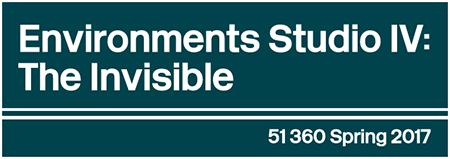

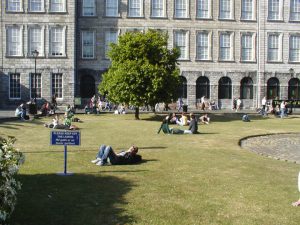
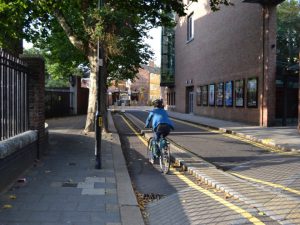
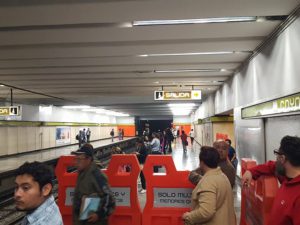

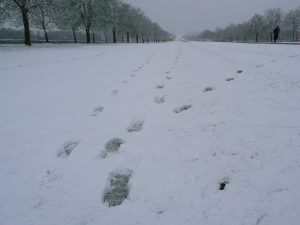


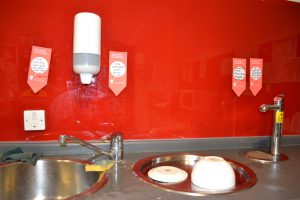
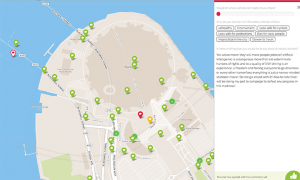



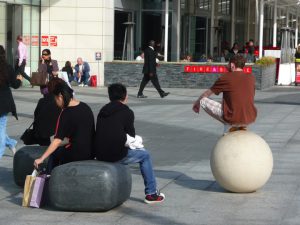



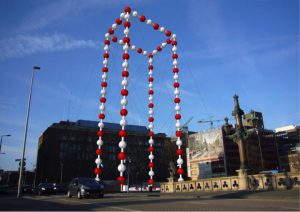
Pingback: Project 1: Design, Behavior and Social Interaction | Environments Studio IV
Pingback: Materializing the Invisible | Environments Studio IV
Pingback: Thinking About Things That Think About How We Think | Environments Studio IV
Pingback: Environments Studio: Materializing the Invisible | Imaginaries Lab | Dr Dan Lockton
Pingback: Environments Studio: Design, Behavior and Social Interaction | Imaginaries Lab | Dr Dan Lockton